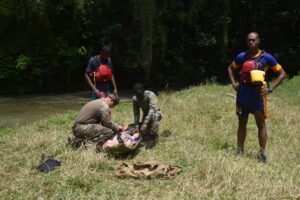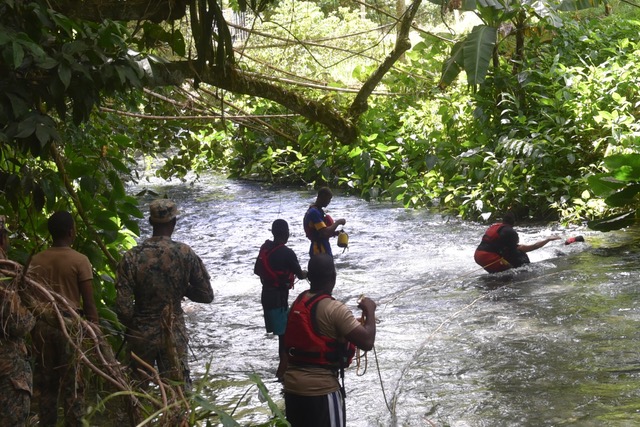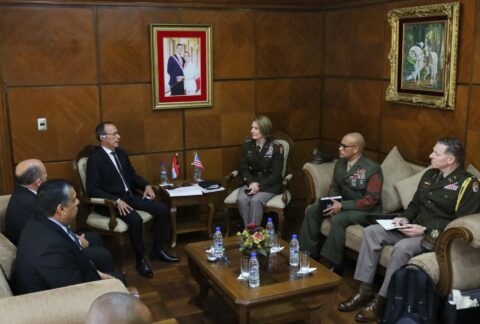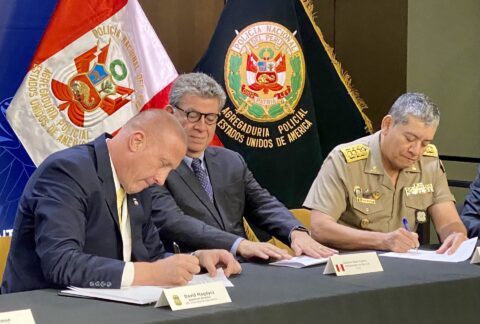It was during a key leader engagement at Up Park Camp in Kingston, between Jamaica Defence Force (JDF) Brigadier Markland Lloyd, Force executive officer (FXO), and Brigadier General Hernando Garzon Rey, U.S. Army South (ARSOUTH) deputy commanding general for Interoperability, that the future of the JDF’s humanitarian assistance and disaster response (HA/DR) operational needs were outlined, training gaps identified, and funding constraints addressed.
While ARSOUTH resources were limited, Security Cooperation Office – Jamaica (SCO JAM) reached out to the 571st Mobile Support Advisory Squadron (MSAS), a highly capable and versatile U.S. Air Force unit based out of Travis Air Force Base, California. SCO JAM and the MSAS, which eventually decided upon a suitable timeframe between July and August, were also able to front load an additional training package for the JDF’s Special Activities Regiment (SPEAR). This follow-on engagement built on advanced Tactical Combat Casualty Care (TCCC) training that the 571st MSAS conducted in February 2022, and primarily focused on austere medical applications in restricted and inaccessible terrain as well as increased interoperability within the JDF.

The four weeks of HA/DR training was a course specifically crafted by the 571st MSAS for the JDF’s Disaster Assistance Relief Team (DART), and its crisis and contingency response mission throughout the Caribbean region.
“We created this course for the DART in order to optimize competencies in command and control with an emphasis on civil unrest operations, field medical treatment, and swiftwater rescue applications,” said team lead, U.S. Air Force Senior Master Sergeant Caleb Dysert.
The DART is composed of five specialties: search and rescue, security, engineering, logistics, and medical. This portion of the Mobile Training Team (MTT) took cross-functional interoperability to new heights while cycling 88 soldiers, sailors, and airmen through four, week-long intensives. The joint U.S.-Jamaica effort incorporated training with the JDF’s Health and Services Corp, the Protected Mobility Vehicles Squadron, the Air Wing, and included floodwater training in a remote location, hours outside of Kingston.
Students received two intense days of TCCC instruction and hands-on application, followed by a day of patient packaging and loading from both the PMV Squadron and the rotary wing. The last two days of this training package took place at Old Spanish Bridge on White River, where students learned hydrology and various floodwater rescue techniques, culminating in a capstone exercise on the final day.
JDF Lieutenant Damane Henry, Charlie Company Platoon commander of the Fourth Regiment, said, “The course brought about the development of competencies required to be effective aids in casualty case, transport, and search and rescue. As a participant, I was able to take in the information as a leader on the DART. As the liaison officer for the four iterations, I was able to help make the course and its content flow seamlessly in all its environments and transitions.”
The DART weekly capstone exercise began with the team lead designating their 20-25 fellow students into three elements: security, medical, and floodwater rescue. SCO JAM’s team integrated role players as casualties in the river for the scenario, while the JDF contributed an additional 15 personnel to serve as the opposing force, providing an enhanced degree of realism and difficulty. Additional JDF role players simulated casualties in a field adjacent to the river, which the medical element of students had to triage and attend to, eventually transporting them to a casualty collection point and then to either one of two vehicles or the rotary wing element that arrived on location once called in for combat injury. The intent of the capstone was to solidify the various skill sets learned, as well as to showcase to JDF leadership the interoperability of the DART in working with multiple assets.
Leaders from JDF Headquarters came to observe the capstone exercises, including Brig. Lloyd, who said, “The training provided by the MSAS was aimed at improving the critical response capability of the JDF DART should they be called upon to respond to a disaster. While this was achieved, I believe that the greater value was the continued enhancement of the relationship between the JDF and the U.S. military, improving our understanding of each other and building confidence in our capacities to deliver effectively and professionally within our areas of responsibility.”
The knowledge imparted by the 571st MSAS combined with the synergistic efforts of the JDF and SCO JAM, now presents the Caribbean region with a premier disaster response entity, capable of rendering a myriad of relief operations.









